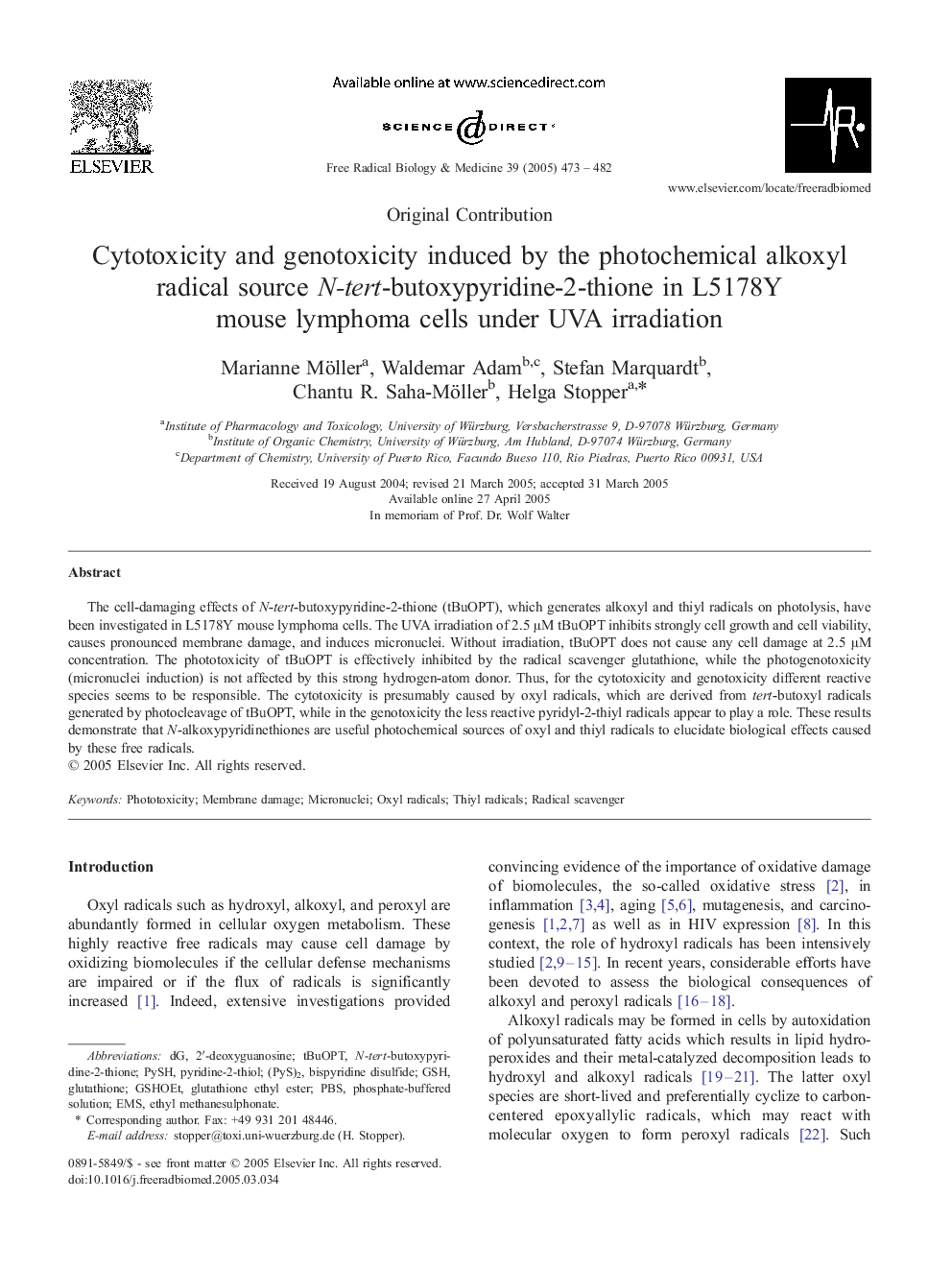| Article ID | Journal | Published Year | Pages | File Type |
|---|---|---|---|---|
| 10739118 | Free Radical Biology and Medicine | 2005 | 10 Pages |
Abstract
The cell-damaging effects of N-tert-butoxypyridine-2-thione (tBuOPT), which generates alkoxyl and thiyl radicals on photolysis, have been investigated in L5178Y mouse lymphoma cells. The UVA irradiation of 2.5 μM tBuOPT inhibits strongly cell growth and cell viability, causes pronounced membrane damage, and induces micronuclei. Without irradiation, tBuOPT does not cause any cell damage at 2.5 μM concentration. The phototoxicity of tBuOPT is effectively inhibited by the radical scavenger glutathione, while the photogenotoxicity (micronuclei induction) is not affected by this strong hydrogen-atom donor. Thus, for the cytotoxicity and genotoxicity different reactive species seems to be responsible. The cytotoxicity is presumably caused by oxyl radicals, which are derived from tert-butoxyl radicals generated by photocleavage of tBuOPT, while in the genotoxicity the less reactive pyridyl-2-thiyl radicals appear to play a role. These results demonstrate that N-alkoxypyridinethiones are useful photochemical sources of oxyl and thiyl radicals to elucidate biological effects caused by these free radicals.
Keywords
Related Topics
Life Sciences
Biochemistry, Genetics and Molecular Biology
Ageing
Authors
Marianne Möller, Waldemar Adam, Stefan Marquardt, Chantu R. Saha-Möller, Helga Stopper,
